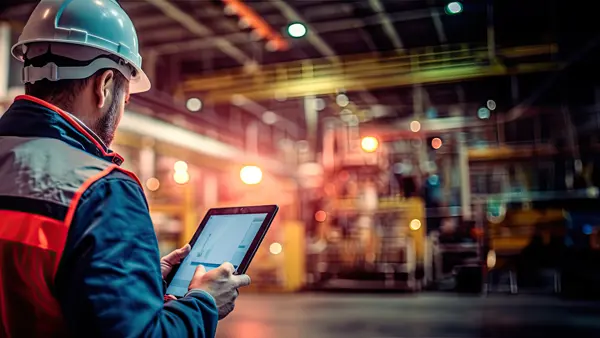The Key Challenges of ERP Modernization

Old-School Manufacturing ERPs: Why It’s Time for ERP Modernization

Old cars are a passion of mine.
I have owned many cars over the years. The garage currently has my 1966 Mustang Convertible (which was my friend’s dad’s car, and in their family for over 25 years), and my beloved 1979 Ford F-100 (which was the first car I ever bought and have owned for over 30 years).
They both bring me a lot of joy (and turn a lot of heads – especially the Mustang at car shows). But I won’t lie – it’s a commitment on my part in terms of time, energy, and money to make sure these classics are all running smoothly. And sometimes unexpected issues – or just plain wear-and-tear – can make that commitment far more sizable.
ERP systems are the same. There are a lot of good old-school manufacturing ERPs out there, but companies have to consider: the older those ERPs get, the more sizable the maintenance investment.
And at what point do you just need to move on?
I recently talked with Jeff Hunt, Vice President of ERP Solutions at HSO, about what we’re hearing from manufacturing customers on their ERP modernization journeys.
Why Manufacturers Are Changing Their ERPs
No one wants an “oh, [expletive]” moment.
But as the manufacturing industry continues to evolve, and technology continues to innovate, the risk of one of those moments arising—due to an ERP that’s old enough to legally buy beer—becomes more imminent.
Let’s face it: the consultants that built those systems are leaving the workforce, and the new generation of consultants are not interested in learning old tech. So much like finding a guy to tune your 30-year-old Holley carburetor, finding that legacy ERP consultant is becoming more and more difficult.
Here are the key drivers that are pushing manufacturers toward more modern ERP systems:
Simplify Processes
Manufacturers are under constant pressure to do more with less. One of the most consistent themes we hear is the desire to simplify and standardize business processes. Whether it's procurement, finance, or shop floor operations, modern ERP systems help eliminate complexity and drive best practices across the organization.
Support Future Business
As manufacturers scale—through organic growth, acquisitions, or global expansion—they need systems that can support where they’re going, not just where they’ve been. A modern ERP provides the agility to adapt and standardize across regions, business units, and newly acquired entities.
Improve Operational Efficiency
From consolidating systems to automating manual tasks, manufacturers are looking for ways to streamline operations. With modern ERP, functions like advanced warehousing or AI-powered invoice processing shift people from data entry roles to exception handling and strategic work.
Make Data More Actionable
Many legacy systems result in siloed or untrustworthy data. Manufacturers are rethinking how they handle customer, product, and financial data—aiming for clean, connected data that enables real-time decision-making and better business outcomes.
Transform How We Operate
Ultimately, modern ERP isn’t just a system upgrade—it’s a chance to rethink how the business runs. It’s about aligning processes to outcomes, reducing technical debt, and putting the business in a position to take advantage of emerging technologies like AI and predictive analytics. System modernization is really your first step in an Industry 4.0 journey.
- 1
Requirements
Getting clear on what the business needs—and aligning stakeholders around it—is a major hurdle. Especially in global or multi-entity organizations, building consensus around processes and priorities can be tough. But taking the time to “measure twice and cut once” is essential to avoid costly missteps.
- 2
People
You can’t run a successful ERP transformation without the right people engaged. This means securing executive sponsorship, identifying key stakeholders, and making sure there’s enough bandwidth to support the work. It’s also about change champions—people who can help drive adoption across departments.
- 3
Data
Data is always a surprise challenge. Whether it’s dirty customer records, mismatched product hierarchies, or outdated chart of accounts, data quality issues can stall a project. Cleaning and rationalizing data before the project even starts is one of the smartest moves an organization can make.
- 4
Change Management
This is more than training people on a new system. It’s about getting agreement on what’s changing and why, aligning teams to new ways of working, and communicating the “what’s in it for me” at every level. Companies that invest in change management—up front—see faster adoption and greater long-term success.
What We Believe at HSO
At HSO, we approach ERP modernization with a few guiding principles:
Focus on Outcomes
We start with the business outcome you’re trying to achieve, not just replicating old workflows in a new system. What do you want your processes to deliver? What decisions should your data enable?
Challenge Your Thinking and Processes
Just because a process has worked for years doesn’t mean it’s still the best way. We help our customers reevaluate how work gets done—and align to new capabilities like AI, automation, and real-time analytics.
Build a Foundation to Grow On
Modern ERP isn’t just about today—it’s about setting you up for the next 5–10 years. That means staying close to standard functionality, avoiding heavy customization, and building with scale in mind.
Provide Leadership Throughout the Project
ERP modernization is more than a technology project—it’s a business transformation. That takes leadership, not just project management. We work as an extension of your team to guide the strategy, structure, and sequencing of your transformation.
Final Thought
I wouldn’t drive my ‘66 Mustang cross-country today. It’s beautiful—but it wasn’t built for today’s roads, traffic, or fuel standards. Your ERP might have gotten you where you are, but the road ahead calls for something built for the future.
Let’s make sure your ERP is ready for the journey.
Learn More About
ERP Modernization for Manufacturing




